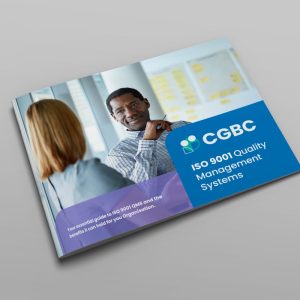The new ISO 9001:2015 places strong emphasis on Quality Objectives.
How do these objectives fit into the overall business strategy? How can they be implemented smoothly and what extra value can they bring to the business?
Business Goals
All organisations will have a set of business goals. The most popular ones are based on increasing revenue and will concentrate on the growth of the company. In order to achieve these goals, objectives are set and a strategy or plan is put into place to achieve them.
Quality Objectives
The same concept applies when it comes to implementing ISO 9001 :2015. The inclusion of quality objectives that match the business goals is a key element of the new version of the standard. When the quality objectives are set a suitable plan will be put in place to achieve them and this should complement the overall business goals.
Quality objectives are like a statement of improvement. The concept of a QMS is to operate to best practice and strive for continuous improvement.
The objectives will centre on the product, the customer and the performance of the business. It will also take into account the effectiveness of the quality management system.
Objectives relating to customers
If your goal is to improve customer satisfaction then your objectives may be around improving delivery time or implementing a satisfactory returns policy. You will then build a plan around this and measure its success. By addressing any issues that arise it can be improved each time until the level is acceptable and the objective is reached.
Objectives relating to products
If your goal is to have a better performing product your objectives may be around reducing defects in the product and achieving uniformity. You will need to put a plan in place as to how these improvements will be made.
Objectives relating to processes
A quality objective can be based around your processes. An example of this is where you want to increase productivity and maybe this can be done by implementing SOPs. The results of this will be easy to measure and it will become quite clear when objectives are met.
Objectives relating to resources
A quality objective can be based around your resources. Competency to do the job assigned might be an objective and where this is not met some additional training for the staff member could be the answer.
SMART Objectives
As with all objectives, quality objectives need to be SMART. That is, they need to be Specific, Measurable, Achievable, Realistic and Timely. If any of these elements are missing then there will be issues. If they are not specific and measurable it will be difficult to see if there has been success. If they are not realistic and achievable then it will be difficult to motivate the team to be involved. A time element needs to be included so there is a structure around the process.
The quality objectives associated with ISO 9001:2015 should be compatible with the business goals. They should be SMART. They should also enhance the organisations operation and lead to improvements that benefit all stakeholders.
ISO 9001:2015 has many additional benefits to business and has proven itself to be a great business tool. If you are considering implementing a quality management system within your organisation or are transitioning from the old version please get in contact with us to see what assistance we can offer you.





